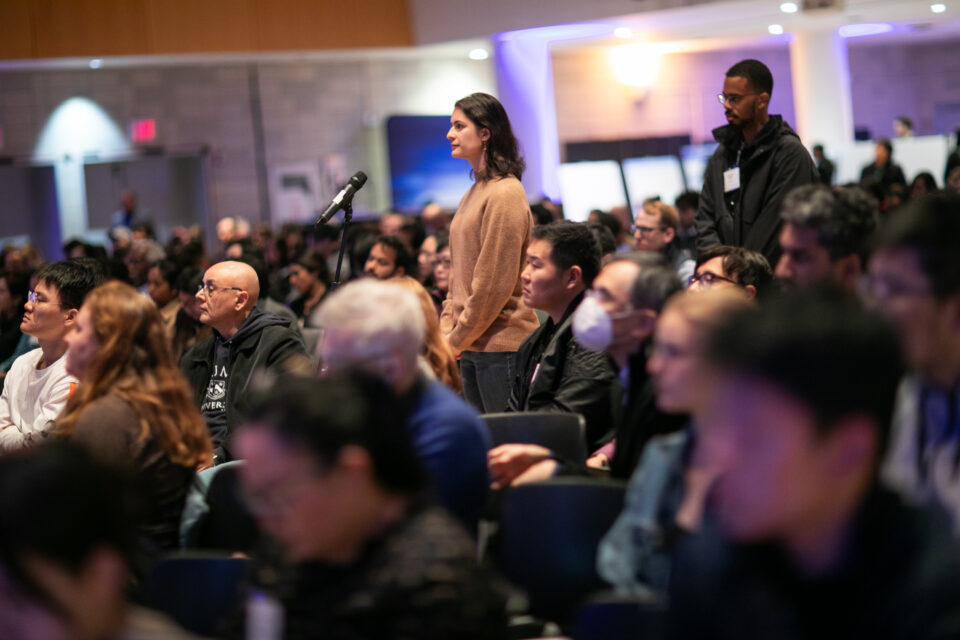


Kate Ascher Frames the Discussion
Professor Kate Ascher of Architecture, Planning and Preservation, opened the session. With a background spanning real estate, urban planning, transportation, infrastructure, sustainability, and economic development, Professor Ascher was well positioned to lead conversation exploring the challenges and opportunities in two major areas of climate change discussions: the fuels with which we run our world, and the energy consumption and emissions of buildings in an increasingly urban planet.
Douglas Almond: “Methane Spikes when US Liquid Natural Gas Unloaded in Europe”

In terms of climate change, unburnt methane creates 86 times more global warming than an equivalent amount of carbon dioxide. And while methane emissions were steady 20 years ago, the growth in methane emissions is increasing every year, at a faster rate than CO2. Much of the reason is the increase in U.S. production of natural gas, largely due to fracking.
Professor Almond focused on methane leakage from U.S. deliveries of liquified natural gas from the U.S. to Europe via ship. Examining satellite images from over 1,000 U.S. voyages between 2019 and and 2022, and just under 9,000 voyages from other ports, and combining that data with satellite data on methane emissions at European loading facilities, he established that there is a marked increase in methane emissions associated with the U.S. vessels.
Curiously, there isn’t a similar leakage from vessels originating from other nations, such as Russia or Australia, a phenomenon whose cause hasn’t yet been identified. Different ship configurations, the nitrogen content of the U.S. product, or the nature of the loading contracts are among the areas for further study, he noted during the Q&A part of the session.
“These leakage rates are high,” Professor Almond said of the data from U.S. ships. “As we think about the energy transition, perhaps we shouldn’t consider natural gas as an ideal transition fuel on the way to renewables because of its climate impact, which is much worse than we thought even five years ago.”
Douglas Almond is Professor of Economics and International and Public Affairs at the School of International and Public Affairs.
Bianca Howard: “Decision-Making for Building Decarbonization”

In dense urban environments like New York City, buildings account for 70% of greenhouse gas emissions. To reduce emissions, Bianca Howard, who leads the Building Energy Research Lab, leverages data science to determine how best to reduce the carbon footprint of buildings in a tailored way, exploring options to increase the use of renewable energy sources, along with local storage, demand management, and thermal resilience to improve temperature regulation, and building operation that is responsive to the needs of the larger electrical grid. It’s a challenge that calls for much engineering modeling, optimization, and data science.
“The goal we’re trying to achieve is quite complex,” said Professor Howard. Beyond these physical requirements, successful conversion, as required by New York City law by 2030, must also consider “decarbonization pathways” that are acceptable to residents in different types of urban buildings with different social and community needs.
Professor Howard detailed plans for a system of engineering design, implementation, and optimization, with additional goals including green job creation, equity in approach, and an alignment of incentives across different interest groups. The objective is creation of a range of diverse options for building decarbonization from which people can choose their appropriate solution. For this problem, data science can speed information gathering and learning, deep neural networks to improve system optimization, and algorithmic decision trees to indicate the best solution for a particular group.
Professor Howard also discussed approaches to aid decision-making in real-time for comfortable, efficient, resilient and low carbon operations. Reinforcement learning agents, at first in simulated environments, can provide a basis for better actions in the physical environment as buildings are asked to deliver more complex tasks.
“Our preliminary data is really encouraging,” she said. “We’re able to use very simplified models and still have good control performance, which is really important for developing these buildings.”